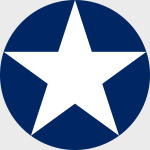Hobby Master HA0203 USN Douglas SBD-3 Dauntless Dive-Bomber - Lt. Richard Halsey Best, VB-6, USS Enterprise (CV-6), Battle of Midway, June 1942 (1:32 Scale)
"They had no right to win. yet they did, and in doing so they changed the course of a war even against the greatest of odds, there is something in the human spirit a magic blend of skill, faith and valor that can lift men from certain defeat to incredible victory."
- Walter Lord, inscribed on the National WWII Memorial, Washington, DC
 The Dauntless was the standard shipborne dive-bomber of the US Navy from mid-1940 until November 1943, when the first Curtiss Helldivers arrived to replace it. Between 1942-43, the Dauntless was pressed into service again and again, seeing action in the Battle of the Coral Sea and the Guadalcanal campaign. It was, however, at the Battle of Midway, that the Dauntless came into its own, singlehandedly destroying four of the Imperial Japanese Navy's frontline carriers. The SBD (referred to, rather affectionately by her aircrews, as "Slow But Deadly") was gradually phased out during 1944. The June 20th, 1944 strike against the Japanese Mobile Fleet, known as the Battle of the Philippine Sea, was the last major engagement in which it was used. From 1942 to 1944, the SBD was also used by several land-based Marine Corps squadrons.
The Dauntless was the standard shipborne dive-bomber of the US Navy from mid-1940 until November 1943, when the first Curtiss Helldivers arrived to replace it. Between 1942-43, the Dauntless was pressed into service again and again, seeing action in the Battle of the Coral Sea and the Guadalcanal campaign. It was, however, at the Battle of Midway, that the Dauntless came into its own, singlehandedly destroying four of the Imperial Japanese Navy's frontline carriers. The SBD (referred to, rather affectionately by her aircrews, as "Slow But Deadly") was gradually phased out during 1944. The June 20th, 1944 strike against the Japanese Mobile Fleet, known as the Battle of the Philippine Sea, was the last major engagement in which it was used. From 1942 to 1944, the SBD was also used by several land-based Marine Corps squadrons.
Built as a two-seat, low-wing Navy scout bomber, the Dauntless was powered by a single Wright R1820 1200-horsepower engine. It became the mainstay of the Navy's air fleet in the Pacific, suffering the lowest loss ratio of any U.S. carrier-borne aircraft. A total of 5,936 SBDs were delivered to the Navy and Marine Corps between 1940 and the end of its production, in July 1944.
This particular 1:32 scale replica of a US Navy SBD-3 Dauntless dive-bomber was piloted by Lt. Richard H. Best, who was attached to VB-6, then embarked upon the USS Enterprise during the Battle of Midway, which occurred in June 1942. Only 500 pieces produced.
Sold Out!
Dimensions:
Wingspan: 15-3/4-inches
Length: 12-1/2-inches
Release Date: June 2010
Historical Account: "Best of Breed" - After contact reports of Midway-based PBY Catalina patrol aircraft on the morning of June 4th, 1942, Enterprise started to launch her air group starting on 07:06h. Under the overall command of the air group commander (CEAG) Lt.Cdr. Wade McClusky were 14 TBD-1 Devastator torpedo bombers of Torpedo Squadron 6 (VT-6), 34 SBDs of VB-6, the CEAG section, and VS-6, and ten F4F-4 Wildcat fighters of Fighting Squadron 6 (VF-6). However, the squadrons became separated and reached the Japanese independently. Only the dive bombers stayed together and reached the enemy by 09:55h. At about 10:22h the Enterprise dive bombers started to attack two Japanese carriers, which proved to be the Kaga, and the Akagi.
Then again, the attack became confused, as all 34 Dauntlesses started to attack Kaga, and none the Akagi. Obviously, Best expected to attack according to the U.S. dive bomber doctrine. This was that VB-6 would attack the nearer carrier (in that case Kaga) and VS-6 the one further away (here Akagi). The three-plane CEAG section was expected to attack last, as their planes were equipped with cameras to later assess the damage. However, evidently McClusky was not aware of this, having until becoming CEAG been a fighter pilot. Therefore McClusky began his dive on Kaga, being followed by VS-6, and Best's VB-6 was also attacking Kaga according to doctrine. Lieutenant Best noticed the error and broke off with his two wingmen to attack the Akagi.
At 10:26h Best's three SBDs attacked the Akagi. The first bomb, dropped by Lt.(jg) Edwin John Kroeger, missed. The second bomb, aimed by Ens. Frederic Thomas Weber, landed in the water, near the stern. The force wave of that hit jammed the Akagi's rudder. The last bomb, dropped by Richard Best, punched though the flight deck and exploded in the upper hangar, in the middle of 18 Nakajima B5N2 planes, parked there. That hit doomed the Akagi. Later that day, Lieutenant Best participated in the attack on the last remaining Japanese carrier - the Hiryu, maybe scoring one of the four hits. After the battle, Best was awarded the Navy Cross and the Distinguished Flying Cross.
However, on the morning flight Best had tested an oxygen bottle to be sure that it was not leaking caustic soda. Best's first inhalation was then filled with gas fumes. He snorted the gas fumes out, not thinking about it anymore. The next day Best began repeatedly to cough up blood. The flight surgeon found out that the gas fumes had activated latent tuberculosis. He entered the hospital at Pearl Harbor on June 24th, 1942. After undergoing 32 months of treatment, Richard Best retired from the US Navy in 1944.


